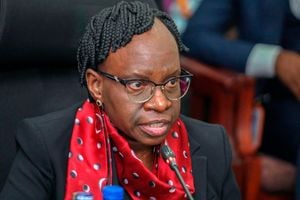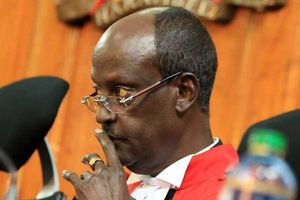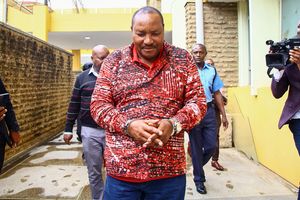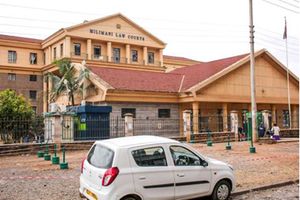
President William Ruto delivers his speech during first anniversary celebrations of Hustler Fund in Nairobi.
Disbursements to the Hustler Fund fell sharply by 93.3 percent to a paltry Sh800 million in the Financial Year ending June 2024, amid reports of a spike in non-payment of the micro-loans as the government threatens to blacklist defaulters.
A report published by the National Treasury shows that in the previous financial year, the State released Sh12 billion to the revolving kitty as borrowers warmed up to the new mobile lending platform that promised to disrupt the existing digital lending products such as KCB-M-Pesa and M-Shwari. Safaricom co-owns the former with KCB and the latter with NCBA.
The Financial Inclusion Fund, popularly known as Hustler Fund, was part of President William Ruto’s plan to uplift millions of ordinary Kenyans christened ‘hustlers’ by allowing them to access loans of between Sh500 and Sh50,000 on their mobile phones.
On the back of this high uptake in the first financial year, the State Department for Micro, Small and Medium Enterprises (MSMEs), which implements the Fund, initially asked to be allocated Sh22 billion for the second financial year starting July 2023.
However, the Sector Working Group, a team of public policy experts that prioritises budgetary allocations with their input informing the Budget Policy Statement, only approved Sh15 billion. The same would eventually be trimmed further down to Sh5 billion by the National Treasury, and approved by the National Assembly.
Of the Sh5.12 billion, the government only disbursed Sh800 million even as it emerged that the government was struggling to recover the initial Sh12 billion it had lent.
The government says that by the end of June last year, it had given credit of Sh36 billion by the end of November 2023 from the revolving fund, benefiting 22 million borrowers.
President William Ruto abandoned his campaign promise to set up a Sh50 billion as soon as he got into office and instead allocated Sh20 billion to the Financial Inclusion Fund, popularly known as the Hustler Fund.
The Cabinet Secretary for Cooperatives and MSMEs for Wycliffe Oparanya said that of the 21 million people that had borrowed from the Hustler Fund, 19 million, or 90.4 percent, “disappeared with the money.”
Mr Oparanya put the defaulters on notice, revealing that they were working on a tool that would track down the defaulters.
“So, for those 19 million people, I am coming for you to make sure that you pay so that others can benefit,” said Oparanya during a public function last year.
Earlier in the same year, President William Ruto had warned those who had defaulted “that they will not run far.”
“The Hustler Fund is not free and should be returned to the government,” said President Ruto.
Kenya Kwanza’s initial plan was to set aside Sh50 billion for the Hustler Fund for each of the Financial Year. The plan to set up a Sh50 billion war-chest to lend to hustlers was a major promise by the Ruto-led coalition in the last presidential campaigns.
But in his first mini-budget, the government allocated only Sh20 billion for the kitty and told the International Monetary Fund (IMF) that there would be “heavy private sector participation with limited budgetary implications.”
Kenya, which is supposed to reduce its spending in an agreement it has with the IMF, also committed to the IMF that its contributions to the Hustler Fund would be “capped to a limit” in what was aimed at preventing runaway expenditure.
Two years after the unveiling of the fund, the Government had only disbursed Sh12.8 billion, amidst reports of a slowdown in lending following a build-up in non-performing loans which the government has struggled to recover.
The Kenya Kwanza administration came up with the Hustler Fund to offer cheap loans to individuals and businesses at the bottom of the pyramid that have struggled to access credit from commercial banks while others have been victims of predatory lending from shylocks and digital credit providers.
Under the terms of the Hustler Fund launched on December 1, 2022, a borrower receives 95 per cent of the bulk of the amount applied for, while the remaining 5.0 per cent is split into short-term savings (at 30 per cent of the amount) and pension remittance (70 per cent).
The government matches one shilling for every two shillings of contribution to the pension scheme up to a maximum of Sh3,000 per year.









